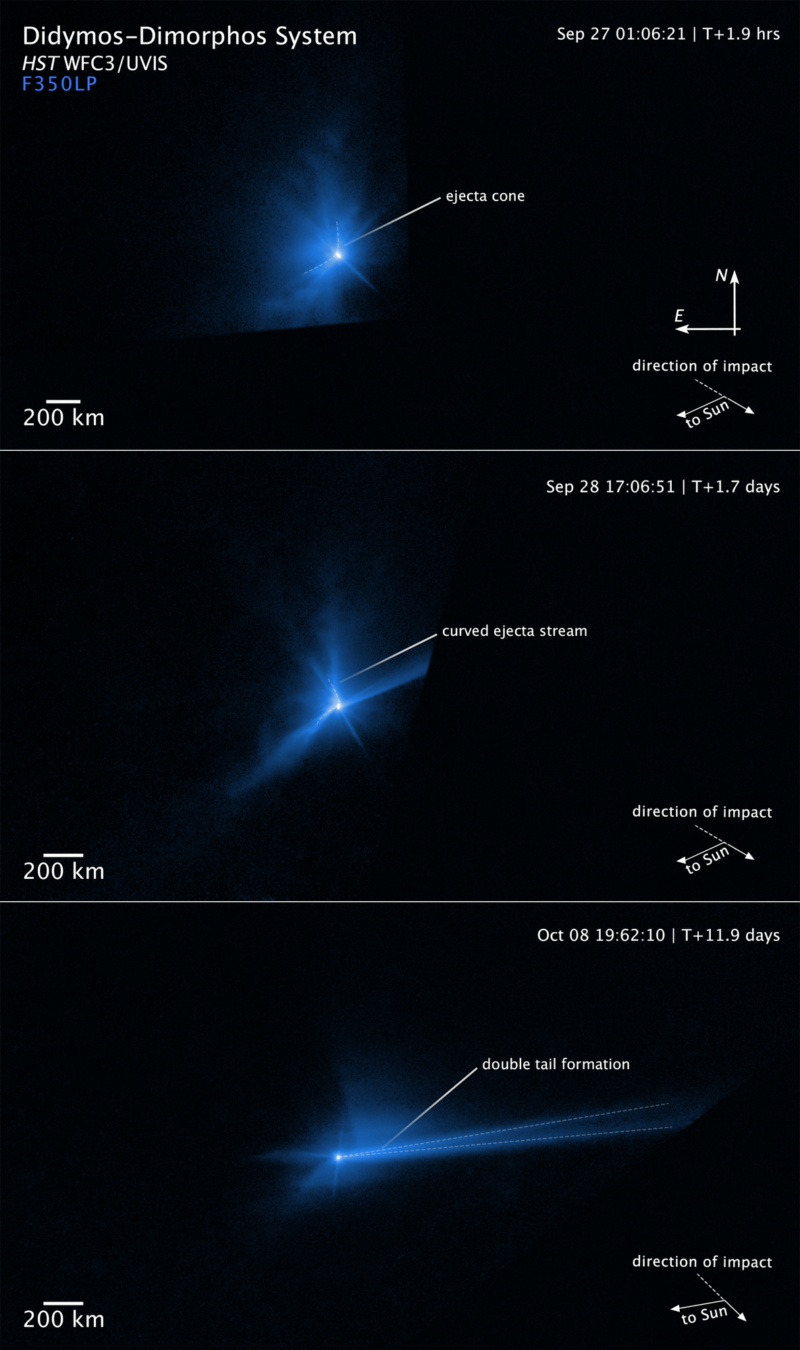
When the NASA DART mission slammed into a small asteroid, we knew with great precision how much the spacecraft weighed and how fast it traveled. If you combine that with our estimates of the motion and mass of its target asteroid, Dimorphos, then you could easily do the math and estimate how much momentum would be lost by the asteroid and what that would mean for its orbit. That bit of math would suggest that Dimorphos' orbit should end up roughly seven minutes shorter.
Instead, the orbit was shortened by a half hour—over four times that number.
Today's issue of Nature contains five articles that collectively reconstruct the impact and its aftermath to explain how DART's collision had an outsized effect. And, in the process, the articles indicate that impactors like DART could be a viable means of protecting the planet from small asteroids.
Feeling defensive
It's easy to forget the role that software played in DART's success. We didn't send anything out to the Didymos/Dimorphos binary system to reconnoiter the place first; instead, NASA just launched DART with one camera and some navigation software that had a rough idea of what to expect. When the software took over, the camera couldn't even resolve the tiny Dimorphos and instead simply kept DART moving toward Didymos for about 25 minutes until the smaller asteroid came into view.
Despite the fact that Dimorphos is roughly 150 meters across on its longest axis, we know where DART struck it to within 68 centimeters—and that this location is near the ideal spot to maximize the transfer of momentum from the spacecraft to the asteroid. The onboard camera also provided detailed images of the impact site up to seconds before it was destroyed. Combined with knowledge of the orientation of the spacecraft, this allows for a fantastically detailed description of the impact:
The spacecraft approached the asteroid with its solar arrays canted slightly toward the surface. The leading edge of the +Y solar array contacted the surface of boulder 1, and this solar array directly hit boulder 1. Almost immediately thereafter, the -Y solar array grazed boulder 2, with the leading edge of the -Y array contacting the surface near the base of boulder 2 in downrange direction. Finally, the spacecraft bus hit between boulders 1 and 2.
This shows that we currently have the technology needed to run an interception on a small asteroid without requiring elaborate reconnaissance in advance. And, as we've known for some time, the impact of the spacecraft can significantly shift the orbit of the asteroid. So, from the planetary-defense perspective, DART was a major validation.
Most of the remaining new information focuses on why the orbital shift was so much larger than a simple calculation might suggest.



3175x175(CURRENT).thumb.jpg.b05acc060982b36f5891ba728e6d953c.jpg)

Recommended Comments
There are no comments to display.
Join the conversation
You can post now and register later. If you have an account, sign in now to post with your account.
Note: Your post will require moderator approval before it will be visible.